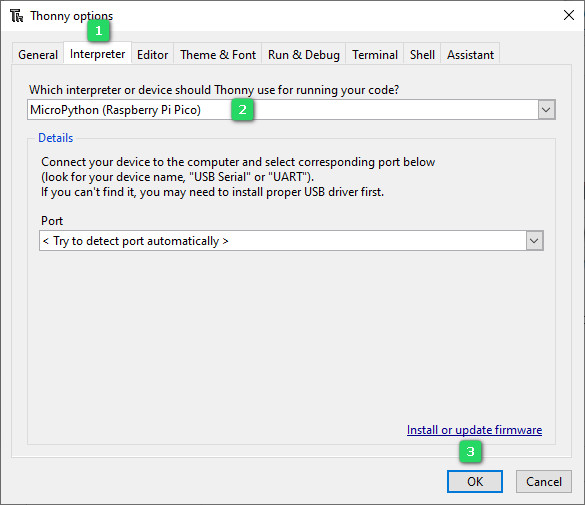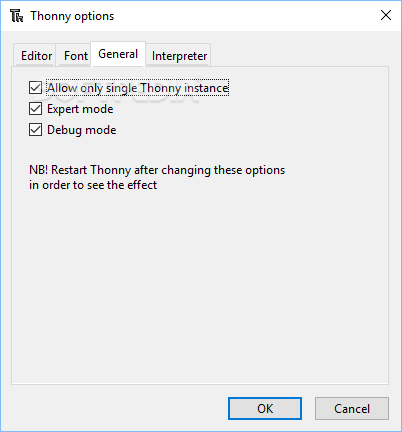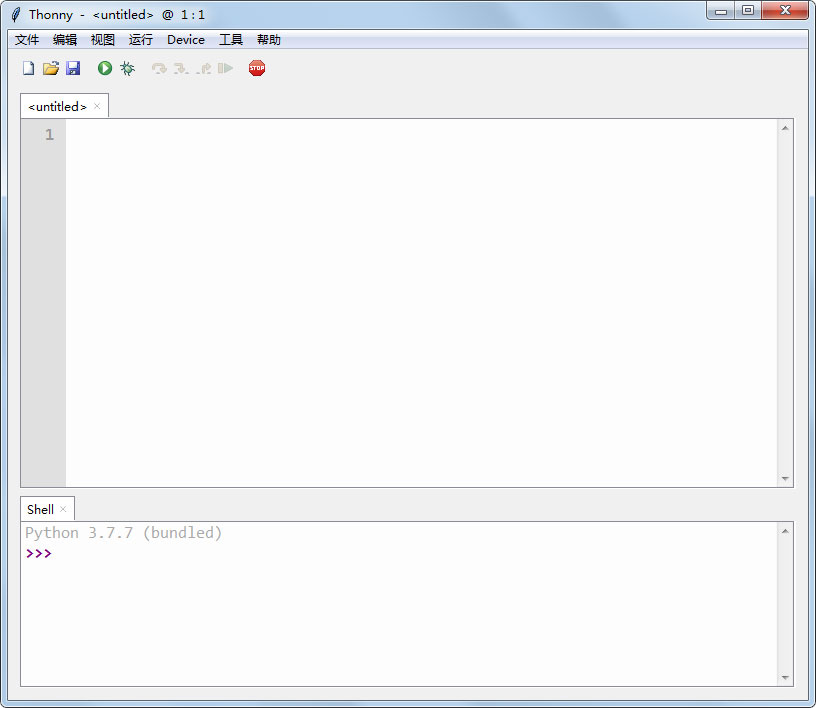

ntrast = 10: The contrast setting goes from -100 to 100, 0 being the default (no change).For example, using camera.rotation = 180 will have the same effect as setting the “vflip” attribute to True. Finally, if you want to rotate the image, you can also use the “rotation” attribute, and give a number of degrees for the rotation. You can also find the same for horizontal flip, using the “hflip” attribute.

Instead of physically modifying the position of the camera or do post-processing work, you can fix this by setting the “vflip” attribute to True. camera.vflip = True: depending on how you position the camera, you may see that the image is upside down.You will need to give a tuple with 2 numbers: first the width, then the height, in pixels.

So, to set the resolution, simply use the “resolution” attribute. You may not need such a high resolution every time, because it impacts the size of the file a lot. The default resolution for the standard Pi camera module v2 is 3280 x 2464.
#Thonny 64bit windows
Don’t forget the extension (most common: “.jpg”, you can also use “.png”), this will be helpful if you want to share and open the picture in Windows for example.Īnd I’ve also added a print to get a visual clue to know when the picture has been taken. Here we store the picture in the Pictures/ directory of the pi user, which is the default user on Raspberry Pi OS. You will have to give at least one argument: the path and name of the file to store the picture. You can use the capture() function from the camera object to take a picture. camera.capture("/home/pi/Pictures/img.jpg") If you want to see the difference, you can try commenting that line, and you’ll see that the quality of the picture we take is not that great – because the camera did not have enough time to adjust to the brightness and other characteristics of the room. That’s why we are then waiting for 2 seconds, before we do anything else. When we create this object, the camera will start initializing itself. Then we create an object from the PiCamera class. We are going to use that class to get access to the physical camera. from picamera import PiCameraįirst, we import the PiCamera class from the picamera module. from picamera import PiCameraĬamera.capture("/home/pi/Pictures/img.jpg")
#Thonny 64bit code
Here’s the Python code to take a picture with the Raspberry Pi camera, using the picamera library. Open up an IDE, such as Thonny Python IDE, or any other IDE/text editor of your choice.
#Thonny 64bit install
$ pip3 install picamera Take a picture with Python and picamera First make sure you have pip3 available on your environment, and then install the picamera module from pip3.
#Thonny 64bit how to
You are learning how to use Raspberry Pi to build your own projects?Ĭheck out Raspberry Pi For Beginners and learn step by step. If, however, you get an error such as ” ModuleNotFoundError: No module named ‘picamera’ “, you’ll need to manually install the module. If you don’t get any message when you press ENTER, it means that everything is fine and you can use the picamera module. To check if the picamera library is installed, open a Python Shell (either from the Thonny IDE, or simply type python3 in a terminal), and execute import picamera. Python3 is the default, you can also use the Thonny IDE for Python, and the picamera Python library is installed. Then, if you have installed Raspberry Pi OS, everything is already configured for you. If you haven’t done that yet, check out this Raspberry Pi camera tutorial where you’ll get all the setup steps, as well as a tour of the raspistill terminal command. Setup – Raspberry Pi camera, picamera library, Python3, IDEįirst, make sure you have installed an OS on your Raspberry Pi, plugged the camera, and enabled it.


 0 kommentar(er)
0 kommentar(er)
